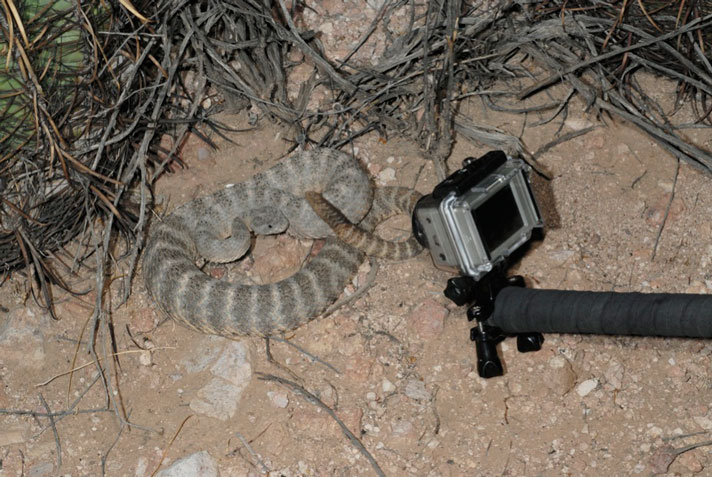Never allow any part of your body to come within striking range.
Question: I love close-up pictures of deadly snakes that show all the details of their faces and heat pits. The guys (and girls?) who take them must be brave to take them. What’s the safest way to photograph venomous snakes up close?
J.J. Mills, San Diego, Calif.

Bill love
A GoPro video camera was easily clamped onto the butt end of a snake hook to allow great close-ups of this wild tiger rattlesnake (Crotalus tigris) in Arizona.
Answer: The safest way to photograph a venomous snake is to follow a simple rule: Never allow any part of your body to come within striking range.
Period.
The simplest way to describe striking range would be that it is approximately the snake’s full length, which you must estimate (and opt to err on the long side). If you’re on sloping ground and the snake is higher than you, it’s best to double, no, triple that distance estimate. They can slide forward considerably downhill during a spirited lunge and surprise you!
Want To Learn More?
Would You Poke a Reptile to Get the Photo You Want?
There are several ways to stay safe getting the cool, close-ups many people crave. You can:
- Take a photo from a distance and crop out the superfluous background.
- Use a long lens that magnifies the scene so you can stay back away from danger.
- Use a clear shield of glass between you and the subject.
- Mount your camera on an extension pole from a safe distance.
Bill Love photographs herps in nature, writes and lectures. He assists his wife, Kathy, with her business, CornUtopia, and via his company, Blue Chameleon Ventures, leads nature tours to view herps in Madagascar.


